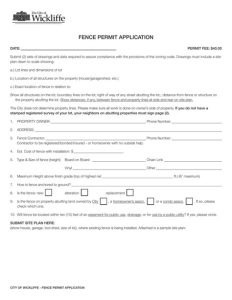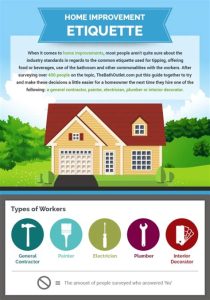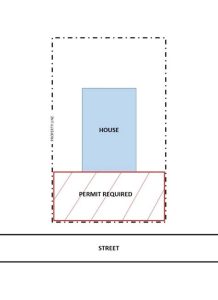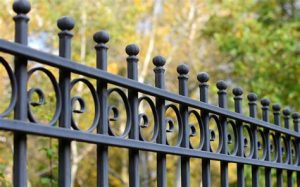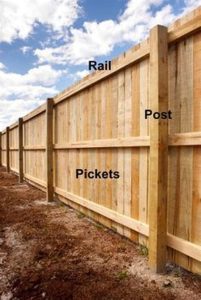Explore essential tips on slope understanding, material selection, planning, drainage solutions, and installation techniques for your next project!Installing a fence on a sloped property can present unique challenges, but with the right knowledge and preparation, it can be a rewarding project. A well-constructed fence not only enhances the visual appeal of your landscape but also provides crucial protection and privacy. However, understanding the nuances of sloped terrain is essential for ensuring stability and functionality. In this blog post, we’ll explore key considerations such as assessing the slope, selecting appropriate materials, and tackling potential drainage issues. Furthermore, we’ll delve into effective installation techniques tailored for uneven ground. Whether you’re a seasoned DIY enthusiast or a novice homeowner, this guide will equip you with the essential insights needed to overcome the obstacles of erecting a fence on a slope. Let’s get started on transforming your sloped yard into a secure and stylish space!
Understanding the Slope
When it comes to installing a fence on a sloped property, understanding the slope itself is crucial. A slope can significantly impact how the fence will be erected, and not addressing it properly can lead to complications down the line. The degree of the slope will determine the type of fence you choose, its height, and the method of installation.
There are generally three types of slopes to consider: gentle slopes, steep slopes, and multi-level slopes.
- Gentle Slopes: These are easier to navigate, as they typically allow for a more straightforward, even fence line, with only minor adjustments needed.
- Steep Slopes: Steeply sloped properties may require the use of stepped or tiered fences to maintain a consistent height and appearance.
- Multi-Level Slopes: Properties with varying elevations may necessitate a custom solution, combining techniques from both gentle and steep slopes.
To effectively address the slope, it’s advisable to first measure the degree of incline using a level or a slope meter. This assessment will guide your selections and strategies moving forward.
Choosing the Right Materials
When installing a fence on a sloped property, choosing the right materials is crucial for durability, aesthetic appeal, and functionality. The terrain’s incline can affect how different materials perform over time, so it’s essential to consider several factors before making your selection.
| Material | Benefits |
|---|---|
| Wood | Offers natural beauty, customizable heights, and can conform to the slope. |
| Vinyl | Low maintenance, available in various styles, and resistant to weather conditions. |
| Chain-Link | Cost-effective, durable, and can be easily installed on uneven surfaces. |
| Composite | Resistant to rotting and splintering, combines the aesthetics of wood with minimal upkeep. |
In addition to considering the materials listed above, homeowners should also take into account the overall maintenance requirements, installation techniques, and how the fence will complement the existing landscape.
Ultimately, the right material will depend on your specific needs, budget, and the overall style you wish to achieve. Take your time to assess each option, considering both the practical implications and visual appeal to ensure a successful and lasting installation.
Preparation and Planning
When it comes to installing a fence on a sloped property, proper preparation and planning are crucial for a successful project. Neglecting these steps can lead to complications down the line, such as uneven panels, wasted materials, and a fence that fails to meet your design intentions.
- Site Evaluation: Assess the slope of your property and determine how steep it is. This includes identifying any obstacles like trees, rocks, or existing structures that could affect the installation process.
- Type of Fence: Choose a fence style suitable for sloped surfaces. Some options, like a racked fence, are designed specifically to accommodate changes in elevation.
- Materials: Select durable materials that can withstand the unique stresses of a sloped installation. Make sure to consider the weight of the materials as well as the potential for erosion or movement in the soil.
Additionally, you should also measure accurately to ensure that your fence fits perfectly along the slope. Taking the time to accurately plan will return dividends when it comes to the aesthetic and functionality of your installed fence.
Don’t forget to check local fencing regulations or homeowner association guidelines before you begin. Some neighbors may have restrictions that can impact your plans, and it’s always wise to ensure you’re compliant.
Lastly, consider whether you’ll need professional help. Depending on your experience and the complexity of the slope, hiring a contractor could save you time and potential pitfalls in your installation.
Solving Drainage Issues
When installing a fence on a sloped property, addressing drainage issues is crucial to maintaining the integrity of both the fence and the landscape. Poor drainage can lead to water pooling around the fence posts, which may cause erosion or even weakening of the fence structure over time. Thus, it’s essential to identify and solve any drainage problems before proceeding with your installation.
One effective method to manage drainage is by creating a French drain. This consists of a trench filled with gravel or rock that facilitates the movement of water away from your fence line. By channeling water away, you reduce the risk of standing water that can compromise the stability of the fence posts.
Additionally, consider implementing grade changes in your landscape design. By sloping the ground away from your fence, you can naturally redirect rainwater downhill, thus preventing it from accumulating at the base of your fence. This simple landscaping adjustment is a proactive approach to avoid future drainage issues.
Lastly, it’s also wise to install drainage tiles around the perimeter of your fence. These tiles are designed to collect excess water and direct it away from vulnerable areas. By considering these drainage solutions, you can ensure that your installed fence remains sturdy and effective for years to come.
Installation Techniques
Installing a fence on a sloped property requires specialized installation techniques to ensure stability, durability, and aesthetic appeal. Whether you’re using wood, vinyl, or chain link, the following methods will guide you through the process effectively.
One popular method for installing a fence on a slope is the step method. This approach involves leveling each fence panel horizontally across the incline.
- Determine the height of your fence.
- Start at the highest point of the slope, digging post holes at even intervals.
- Install the first panel level, then step down to the next post, creating a series of gradual steps.
Alternatively, the racked method allows a fence to follow the contour of the slope without stepping.
- Begin by measuring the slope and marking where each post will be placed.
- Set the posts in a way that the top of each panel remains level, following the natural incline of the ground.
- Adjust the height of each post to accommodate the slope, ensuring that panels fit snugly without gaps.
Regardless of the chosen method, it is essential to ensure that your fence posts are deeply anchored to withstand weather and the weight of the fence material. Consider using concrete for added stability. Remember, taking the time to use proper installation techniques will lead to a secure and visually appealing fence that enhances the charm of your sloped property.
Frequently Asked Questions
What should I consider before installing a fence on a sloped property?
Consider the type of fence, the slope gradient, local regulations, and the installation method that will best suit the terrain.
What types of fences are best for sloped properties?
Chain-link, wood, and vinyl fences are popular choices. Picket fences can also be modified for slopes, while panels may require adjustments.
How can I determine the right height for my fence on a slope?
Measure the slope at its various points and decide if you want a consistent height, stepped design, or a fence that follows the contour of the slope.
Should I hire a professional for fence installation on a slope?
While some homeowners may choose to do it themselves, hiring a professional can ensure proper alignment, stability, and compliance with local codes.
What is the difference between stepped and contoured fencing?
Stepped fencing consists of sections that are installed in a staircase-like format, while contoured fencing follows the exact shape of the slope.
Are there any specific tools needed for installing a fence on uneven terrain?
Yes, tools such as a level, measuring tape, post hole digger, and possibly a saw for cutting fencing materials to the correct length for a slope.
What are the common challenges faced when installing a fence on a sloped property?
Challenges include aligning fence posts, ensuring stability, dealing with uneven ground, and complying with zoning regulations.
